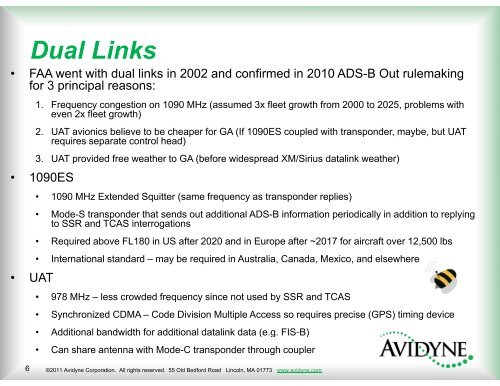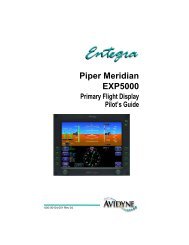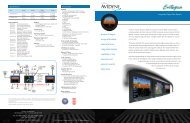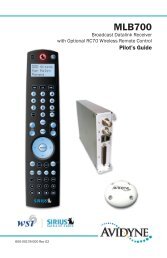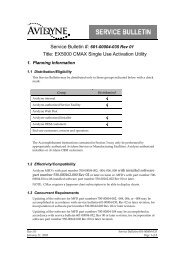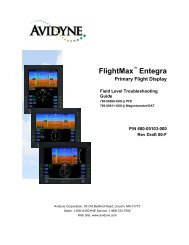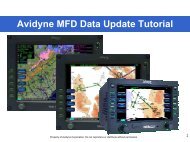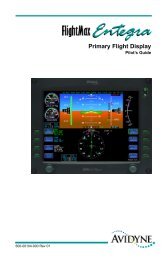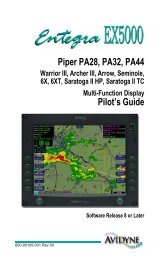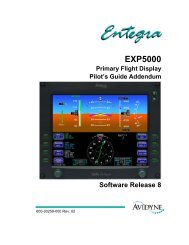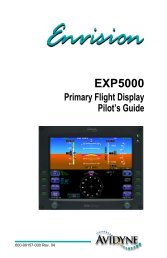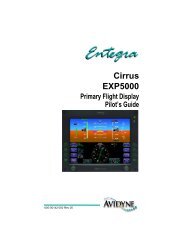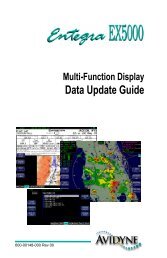ADS-B Webinar (PDF) - Avidyne
ADS-B Webinar (PDF) - Avidyne
ADS-B Webinar (PDF) - Avidyne
- No tags were found...
You also want an ePaper? Increase the reach of your titles
YUMPU automatically turns print PDFs into web optimized ePapers that Google loves.
Dual Links• FAA went with dual links in 2002 and confirmed in 2010 <strong>ADS</strong>-B Out rulemakingfor 3 principal reasons:1. Frequency congestion on 1090 MHz (assumed 3x fleet growth from 2000 to 2025, problems witheven 2x fleet growth)2. UAT avionics believe to be cheaper for GA (If 1090ES coupled with transponder, maybe, but UATrequires separate control head)3. UAT provided free weather to GA (before widespread XM/Sirius datalink weather)• 1090ES• UAT• 1090 MHz Extended d Squitter (same frequency as transponder replies)• Mode-S transponder that sends out additional <strong>ADS</strong>-B information periodically in addition to replyingto SSR and TCAS interrogations• Required above FL180 in US after 2020 and in Europe after ~2017 for aircraft over 12,500 lbs• International standard – may be required in Australia, Canada, Mexico, and elsewhere• 978 MHz – less crowded frequency since not used by SSR and TCAS• Synchronized CDMA – Code Division Multiple Access so requires precise (GPS) timing device• Additional bandwidth for additional datalink data (e.g. FIS-B)• Can share antenna with Mode-C transponder through coupler6©2011 <strong>Avidyne</strong> Corporation. All rights reserved. 55 Old Bedford Road Lincoln, MA 01773 www.avidyne.com


